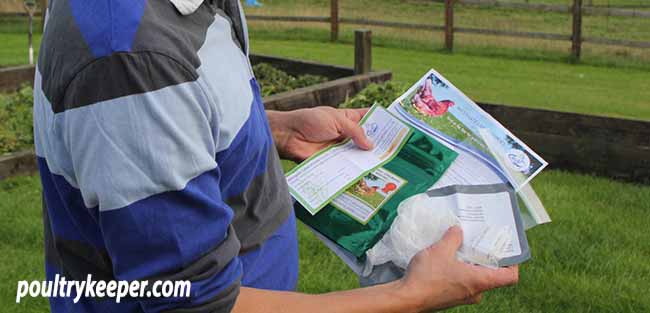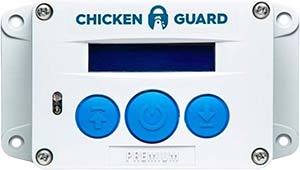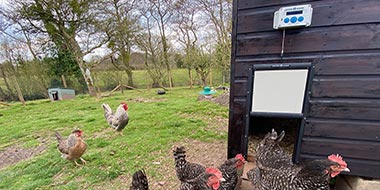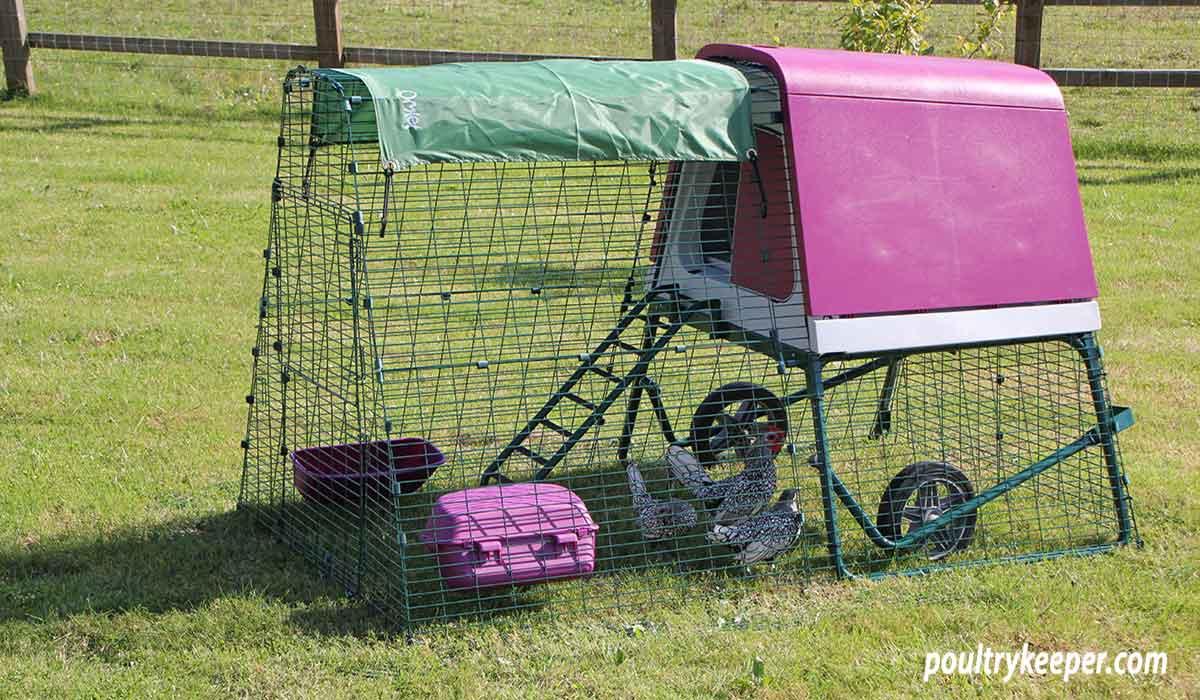
Equipment
Focus
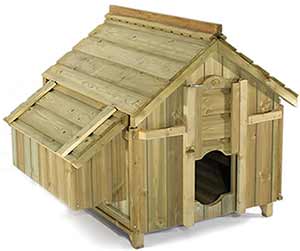
In this guide, Anne and I share our experiences of looking for chicken houses to help you make the right decisions when buying one.
We explore the features you will need in a coop to keep your chickens happy, healthy and above all, safe from predators.
The chicken house or coop is usually considerably more expensive than the chickens which will live in it. While the choice of chicken houses has never been wider and purchasing one has never been simpler, it’s never been easier to make a costly mistake.
Poor quality materials or construction will not only prove uneconomical in the long-term but may cause problems for you and even suffering for your chickens.
What to look for in a chicken coop
Seductive designs, tempting prices, traditional wood, new-fangled plastic chicken houses – today’s excess of choice doesn’t always make life simpler. The good news is that the chickens’ basic requirements are still the same, and if the coop can give them what they need, you won’t go far wrong.
Security
It’s fairly easy to keep chickens in but more difficult to keep everything else out. If the coop isn’t secure against predators, your chickens won’t be around for long, so this must be a top priority.
Imagine being very hungry and knowing a feast awaits inside that chicken-coop. Could you easily smash your way in? What if you had sharp claws and strong teeth to help your endeavours? Badgers, for example, have been known to rip the entire side off a flimsy chicken house to get at the occupants.
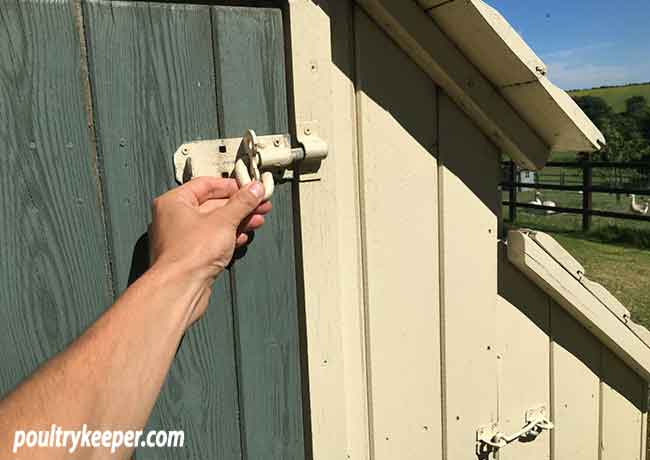
What if you were slim and flexible enough to slip through the smallest gap? Is there any access for rats, weasels or stoats?
Doors are often a weak spot, especially those with weak hinges and catches. Swivel catches tend to work loose and can be turned with a paw. Look for a house with sturdy bolts and robust fixings. Check that nest-boxes with outside access aren’t vulnerable to predators.
Two-legged foxes
Chicken thefts are becoming ever more prevalent, so good padlocks on housing may be a wise precaution depending on where you live. Any window or ventilation holes should be covered with small-gauge wire mesh.
It won’t put off a determined chicken thief, but it should deter many if it will take time and make noise to gain access to the chicken house.
You can buy individual, numbered leg rings for chickens, which can be registered in your name. They are useful for record-keeping and prove ownership at a show, but they can also be cut off easily.
Chicken houses with run attachments
If the coop has a run attached, this too should be constructed from a small-gauge welded mesh. Chicken-wire can be bitten through and is really only effective for keeping chickens contained.
Make sure the run is well-made and secure, with a roof to prevent predators from climbing in. There may also be a ‘skirt’ to make tunnelling under the wire more difficult.
Stability
A house that can be easily tipped or blown over will be uncomfortable for the occupants and not secure. Should you be in a particularly exposed area or plan to keep your chickens in a field with other animals, stability will be vital.
Think about the location of your chicken house and try to avoid open
Weatherproofing
Chickens cope well with the cold but not with dampness or draughts. If the house leaks or the doors don’t fit properly, there will soon be respiratory problems amongst your flock.
Look for a roof with a good pitch and an overhang that sheds water away from the house. Avoid roofing felt, as this can be a great hiding place for red mites. Corrugated metal roofing can result in condensation unless it is well-insulated. Onduline is a popular choice.
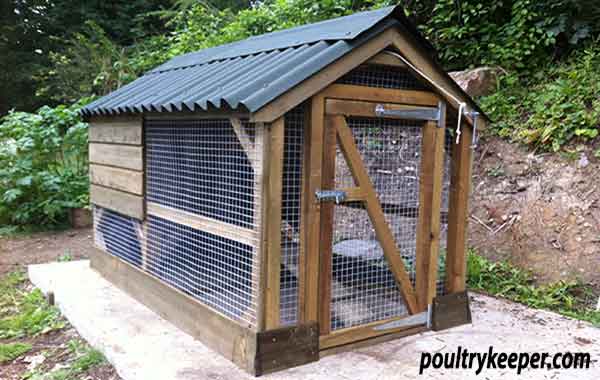
Plastic coops require good insulation to keep the temperature stable and avoid condensation. A well-made wooden coop shouldn’t need any further insulation.
Ventilation
We know that warm air is lighter than cool air, which causes it to rise, and hot air balloons are good proof of this! Well, it’s no different in a chicken coop at night when the hens are roosting: Warm, stale air rises from birds and their droppings and accumulates in the top of the coop.
A small vent situated at a high level will allow warm air to escape and cause fresh air to be drawn through a lower-level vent.
It’s this circulation of air that removes ammonia released from droppings. Ammonia can damage hen’s respiratory systems.
Sometimes ventilation is adjustable, allowing you to moderate the airflow according to the temperature and wind direction.
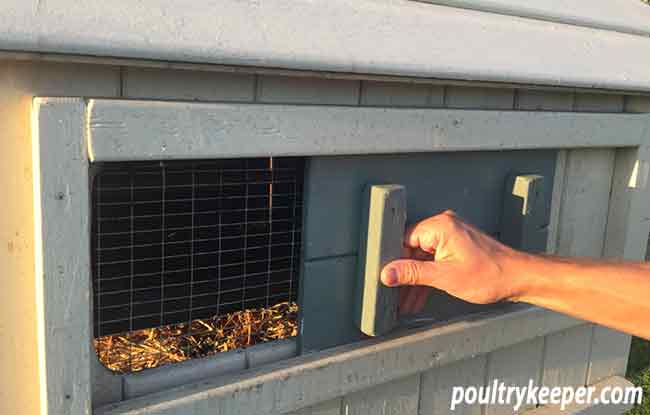
Many people worry that their hens will get cold if vents are open, but remember, they have their own personal feather duvets! They trap air between their feathers, and the air is an excellent insulator.
Although draughts should be avoided, chickens must have air in their house – both in summer and winter. Excess heat is much worse for them than cold. Hot and stale air will cause health issues. Bear in mind that chickens do most of their droppings at night.
Tip: Ventilation
Smell the air before letting your birds out in the morning. If you can smell ammonia, you need to increase the ventilation. You only need to close the vents up to prevent a draught if there is a wind blowing into the coop at night.
Ammonia in droppings can be reduced by adding Garlic supplements to the diet.
The house should also be raised at least a few inches above ground level so that air can circulate underneath and discourage vermin from making homes there.
A coop raised higher than this allows the chickens to shelter beneath it during wet weather and is useful if space is limited.
Light
Some houses have a plastic ‘window’ to let in light. This can help stimulate egg-laying, but your flock will start stirring at dawn. If you don’t want them up and about too early (especially in summer), choose a house that will remain in darkness.
Space
It’s usually best to allow more space than the manufacturer suggests. If the coop is advertised as large enough for four to six chickens, assume a maximum of four. Over-stocking causes bullying and can lead to health issues. There is more information about average sizes below under chicken house dimensions.
Perches
If there isn’t sufficient space on the perches, some chickens will end up on the floor. Not all chickens get along, and the dominant ones may refuse to allow subordinates to roost next to them – think of trying to get a crowd of unruly children to all sleep in one bed!
Try to allow 30cm of perch space per chicken.
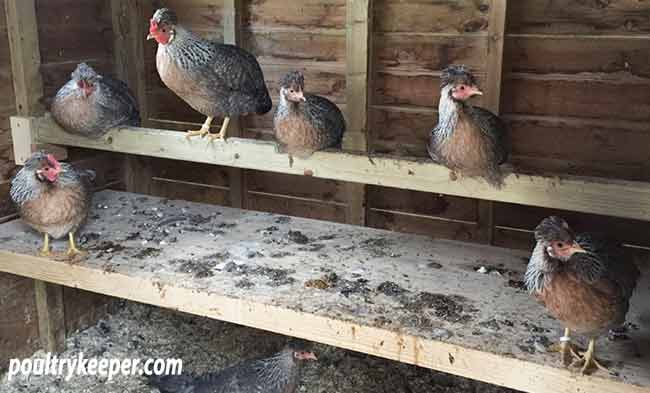
Chickens tuck themselves down to sleep, resting their breasts on the perches. Narrow or round perches will be uncomfortable and cause them problems.
If there are several perches, make sure they aren’t directly underneath each other. A droppings board can be useful if there is space. This allows you to easily collect most of the droppings, which can be composted before being used in the garden.
Heavy breeds of chickens need low-level perches, so they don’t injure themselves when jumping down.
Nest-Boxes
Look for nest-boxes with outside access to save having to open up the coop every time you want to check for eggs.
Nest-boxes should ideally be lower than the perches, or the chickens will roost in them, leading to dirty nesting material and mucky eggs.
Sometimes chickens will lay eggs on the coop floor, and you will need to check the layout and give them a little re-training.
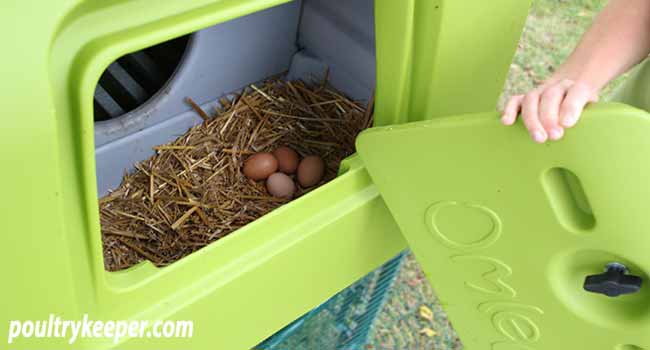
There is a separate guide on nesting boxes for chickens here, which provides more information.
Access for chickens
There should be a small door (a pop-hole) for the chickens to access their house. Sometimes the pop-hole door is on hinges and pulls down to form a little ramp. Alternatively, the door may slide vertically or horizontally – runners on horizontally sliding doors can become clogged up over time.
If you think an automatic pop-hole closer would be useful (and they certainly are), check your door is suitable for operating with this device. Some cheaper models have smaller motors that will only lift lightweight metal doors.
You can read a review of the ChickenGuard automatic chicken door here; it is one I have used extensively and works extremely well.
Automatic
Door Opener
& Closer
The most likely time for predators like foxes to visit is at night, so your chickens must be locked up safely from dusk until dawn.
If you are worried about being at home in time to lock up your chickens, then an automatic chicken house door opener/closer might be the answer.
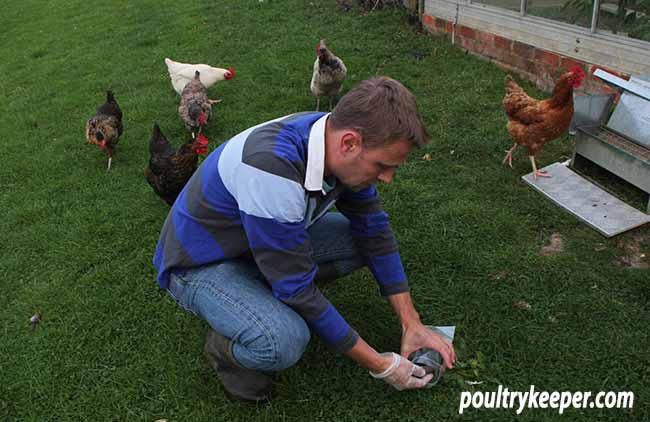
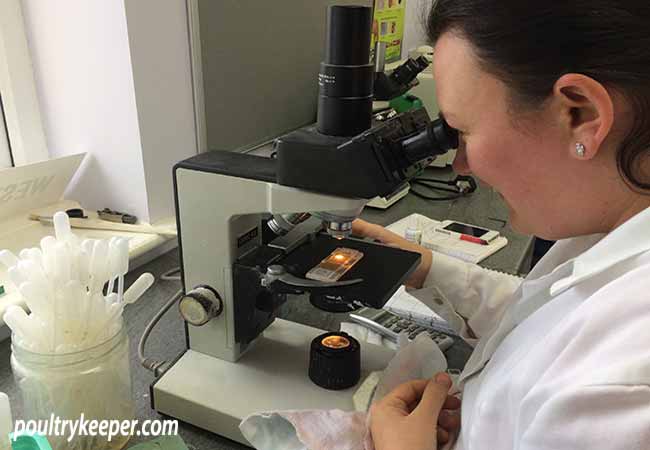
Access for you
You’ll need easy access to the henhouse so you can check on your chickens and clean them out. If the house comes with an attached run, make sure you can get into it without difficulty.
Ease of cleaning
Your chickens will need a good clean out at least once a week, so make life easy for yourself by ensuring the job will be as straightforward as possible. Too many fancy features and crevices will give you hours of fun cleaning them, as well as making it even more difficult if you have to get rid of red mite.
Perches should be removable so they can be taken out and scraped. A removable droppings tray under the perches is a useful feature, as are detachable nest boxes. Some houses can be taken apart completely, and this is a real bonus at spring-cleaning time.
Be careful if considering a second-hand wooden coop. Parasites can lay dormant in an empty house for months, and it can be difficult to ensure they have all been eradicated. This is less of a problem with plastic coops, which are easier to clean thoroughly.
A Family
Guide to
Keeping Chickens
Anne’s book is a full colour, practical book which is ideal for beginners.
Even someone who has never kept animals before should be able to follow the clear, detailed guidance that is given.
It includes planning for your first chickens, understanding their behaviour, choosing suitable housing as well as chickens, equipment you will need, and routine care. Protecting against predators, dealing with parasites and ailments, broody hens and much more.
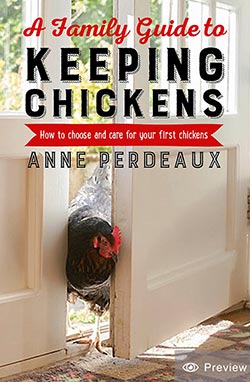
Manoeuvrability
Omlet chicken houses like the Eglu Go Up have wheels that can be pushed down with your foot, lifting the coop above the ground and making it easy to move it to a new location.
You can see a review on the Omlet Eglu Go and the Eglu Go Up here.
Some wooden chicken houses claim to be moveable; however, they are so heavy that they cannot be moved easily by one person, especially on uneven ground. It’s always better to see the actual house before buying so that you can check everything for yourself. Pictures can be misleading and cheap imitations of reputable housing may be offered on-line.
If you plan to move a large coop regularly, look for a model with wheels or skids. Please test it out first, though, to make sure the wheels are adequate for the structure and can be moved around easily.
Some coops have handles so they can be lifted and carried to a new position by two people.
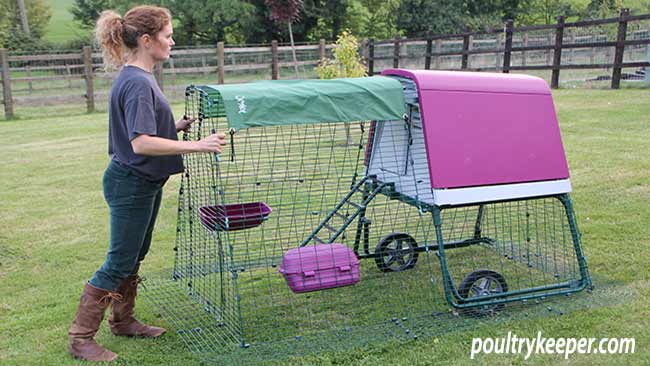
Chicken house dimensions
Useful guides:
- Best Bedding Material for Chickens - A look at several popular bedding options.
- The Beginners' Guide to Keeping Chickens - If you're getting started with hens, this article provides everything you'll need to know.
- Coop: minimum 30cm square per chicken.
- Run: an absolute minimum of one square metre (preferably two) per bird.
- Size: 5cm square (even for small breeds) with the top edges rounded off.
- Perch space: 25-30cm per bird with at least 30cm between perches and room for the tallest chickens to stand upright.
- Each box: 30cm square
- One box for every three hens
- Ideally positioned lower than perches to prevent roosting in nest-boxes at night.
- 35cm high by 30cm wide
- A suitable ramp or step/ladder to reach it if the coop is raised off the ground.
The average dimensions given here are for medium-sized hens. Males are often bigger than hens of the same breed, and large combs may need extra headroom to avoid damage.
Increase proportions overall if you are housing one of the more substantial breeds, such as Brahmas or Orpingtons.

